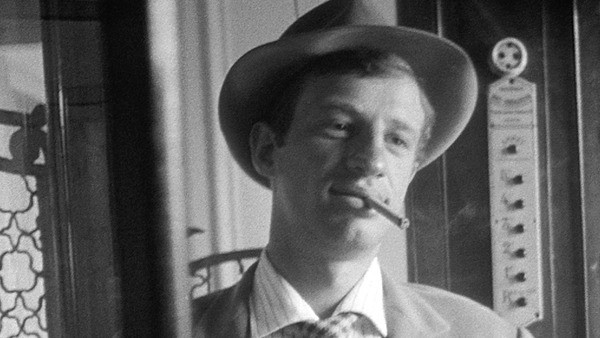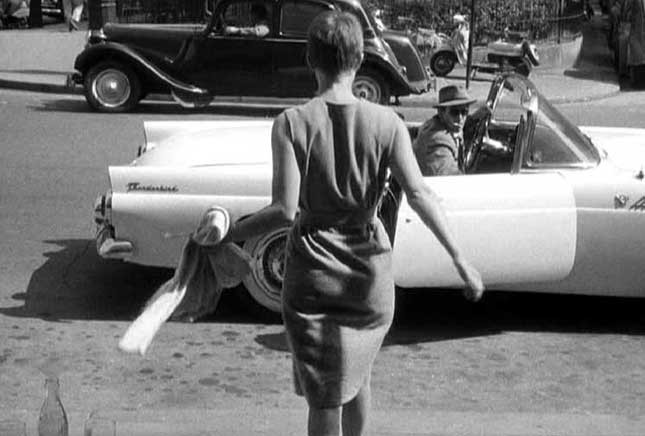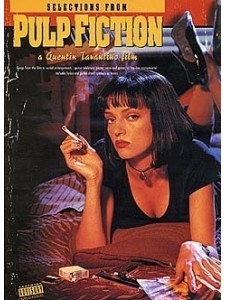Daily Archives: January 8, 2019
Filters
Strike Task.
The use of editing in Strike (1925, Sergei Eisenstein) was heavily used in order to tell the tale of the factory workers and it used Soviet Techniques like Montage heavily in it.
One of the main themes from the film, comes as the form of a clear social divide. The workers are seen as worlds away from the bourgeois, perhaps representing the widening gap between the classes at the time. Audiences would relate to this, regardless of their class because this idea was actually happening within the society at the time of the tsarists regime, which was with living memory of the majority of people A parallel montage is used to show a happy scene of the proletariat eating. This shows how the proletariat work together and a bond which works well particularly with the proletariat at the time of the film’s release. Although they did not have much money, they had love which is shown by their clear happiness.
Next, we are shown a similar scene where the bourgeois also eat breakfast. However, they are shown without family to represent their selfish greed leading to a lonely life of isolation. This shows of how greed is evil and that it corrupts people, leaving them by themselves, isolated. This montage is significant because it shows a clear divide, this is more important for the audience at the time because their emotional investment in the film would increase because they are understanding and first-hand experiencing this social divide.
Cabinet of Dr. Caligari
The Cabinet of Dr. Caligari Task
Mise-En-Scene is an aspect of ‘The Cabinet of Dr. Caligari’ (1920, Wiene). Due to this being a silent film Wiene had to tell the story of Francis and Caligari through various other narrative devices like, mise-en-scene.
Firstly, it is important to understand that The Cabinet of Dr Caligari was not produced by a mainstream company, therefore it had limited resources. And because of this, not a lot of money could be spent on artificial lighting, so paint was used to indicate lighting and shadows. This is one of the most innovative techniques in my opinion and was a great contribution to the overall verisimilitude of the film. Although the film did not have color, verisimilitude could still be created effectively due to these innovative techniques.
The cinematography in the film is innovative because it was able to make the film visually interesting without using color and the cinematography helps to build the verisimilitude and makes the film seem believable. The cinematography in this film can be regarded as innovative because it helps to reinforce the theme of insanity and it communicates this to the audience in a tasteful and subtle manner so when they discover that the narrator is actually insane.
Sound Mixer/Sound Editor
The difference between a Sound Mixer and a Sound Editor is that a Sound Editor brings various different elements of sound individually, for example a score mixer would bring together the score, and a Sound Mixer brings all the various elements together
Whiplash Task
The Kuleshov Effect
The Kuleshov Effect is a technique used in film that was started by Soviet filmmaker Lev Kuleshov in the 1910’s and 1920’s and essentially what it means is that the relationship between two shots can relay more emotions and feelings to a reader then two isolated shots. The most common example used in this the man with the bowl of soup, a child in a grave and a woman lying on a couch. The man is carrying a neutral expression that on it’s own wouldn’t tell the audience anything but when it is put with the other shots the audience infers various feelings and tones depending on the shot, for example when the man was paired with the soup it looked like he was hungry.
The Shining Post
Breathless – editing and cinematography
One of the most arguably innovative editing aspects of Breathless is the jump cuts which seem quite random but help to elevate the film and give it character. An example of this comes from the opening scene, where Michel converses with a woman getting changed. As the scene continues, jump cuts are frequently used to join random fragments of the scene together. Sometimes, this does not necessarily make sense but keeps the audience fully engaged and on edge because they are interested due to the unawareness of what will happen next.
This scene in particular draws the audience in immediately because they want to know what will happen next. By using such random jump cuts, they are kept on their edge of their seat at all times and aware that anything could happen next. Although they seem aimless and very random, they play a pivotal role and purpose in retaining a methodical, yet chaotic and sometimes messy pace of the film. Jump cuts are also used to represent the reckless nature of Michel. After shooting the police officer, a jump cut is used to show him carelessly driving in Paris. This abrupt change can show that he does not care about getting caught and the chaotic jump cut used to transition the scenes can represent his careless nature. Since Michel kills the officer for almost no apparent reason, this careless behaviour is reflected in the editing style as an abrupt and considered unnecessary jump cut is used to transition scene. This is significant because it develops Michel’s character

Another significant example of a jump cut occurs when Michel and Patricia are in the convertible. While the two carry out a conversation, bits of dialogue are skipped out which seems more confusing to the audience as we try to make sense of what they are hearing. This suggests that time has passed, as they have been conversing. A more conventional way to show time passing in films was to film the entire conversation or use one continuous shot. However, Godard adapts his film by using jump cuts instead.
This technique was practically unheard of and certainly not used to the degree or skill displayed in Breathless. But it is significant because it ensures verisimilitude by making the conversations seem dull and boring. In comparison with other editing techniques used at the time this is significant to engage the audience. In this particular scene, the jump cut is considered important because it represents the wildness and unpredictable nature of Michel since we do not know what he is going to say or do next. This has a significant impact on the audience because it continues to develop his character which makes him seem more relatable; specifically to a younger, more rebellious audience who could’ve experienced a similar situation. As a result of this, the film would become more popular since it is more real and relatable compared to the other absurd film plots such as ‘Classe Tous Risques’ (1960, by Claude Sautet) where there is quite a lot of shootings and violence where it may seem unnecessary. It comparison, Breathless utilises more believable action, and even when there in unnecessary dialogue, everything seems to have a purpose.

Breathless can be considered innovative because it breaks the common conventions at the time and establishes an avant-garde style which goes onto influence many aspects of later and contemporary cinema. A notable example include ‘Bonnie and Clyde’ (By Arthur Penn, 1966) which contains numerous visual references to Breathless but also follows the same sort of concept. Clyde represents the wild, impulsive character of Michel whereas Bonnie is alike the free-spirited Patricia. The characters of Breathless themselves are revolutionary at the time of release. Crime was remarkably common in the 1950’s, with most young people turning to either petty or serious crimes to fund fancy lifestyles. France was full of rebellious youth, and many turned to the characters of Michel and Patricia who seemed like glamorous rebels. Although this seemed like it may have caused issues, it served as inspiration for the characters of other films such as, like explained previous, Bonnie and Clyde. But the characters were representative of their time, which means that they would’ve been relatable therefore the film would further resonate with the audience because the characters could be admired and understood by young people who had perhaps went through similar experiences

It is arguable to say that Godard focuses on the visual style of his films opposed to the natural narrative. Although the plot is fresh and relatable to the French youth of 1960, it is admittedly nothing new nor exciting compared to the range of crime dramas globally available at the time. Films like ‘The Truth’ (1960, by Henri-Georges Clouzot) follow a similar criminal and very dramatic narrative and plot structure. However, the visual style of ‘The Truth’ is very basic and it relies heavily on action and drama through the plot and acting to achieve success. However, Breathless utilizes many new innovative cinematographic techniques to elevate the film and ensure that it is different compared to the large market available at the time. Unlike the other crime dramas, Breathless focuses on the editing opposed to the plot and although the characters are significant; most of their personality and traits are expressed through this editing such as representing Michel as carless through the wild and seemingly unnecessary jump cuts. Although the plot is not anything special, the editing is what makes the film unique because it had never been seen before by any other director or editor

This style of focusing on how the film looks, influences well-known director Quentin Tarantino. In particular, his 1994 crime ‘Pulp Fiction’ is heavily influenced by many aspects of the editing form Breathless but also the characters and general feel of the film. Jump cuts are used throughout the film, and there are occasional monologues which seem to make no sense. This style was heavily conceived by Godard, who innovated such unique techniques. In general, the editing style of Godard influences the drop in continuity editing in favour for jump cuts, longer shots and a wider focus for cinematography and editing opposed to narrative and plots. This has an interesting impact on films because it sets them apart from similar genres and plots by ensuring a unique visual style and look.

At the time, most popular Hollywood films adopted a typical, continuity style of editing. Everything seemed to make visual sense and aside from montages and cuts, the visual style was usually basic and easy to understand for the audience. However, Godard breaks this convention right at the start of the film. The film begins with alternating shots of a close-up of Michel and another close-up of a woman. By using close-ups, we get the impression that the characters are positioned close to each other because of the proximity we are viewing them from. However as wide shots are introduced instead, we see that they are positioned quite distant. This may confuse viewers, who are used to the simple and easily perceivable style of continuity editing used by many Hollywood films. Another unique element of Breathless’ editing is the varying shot length. Certain films adopt a usual shot style, by utilizing fast cuts to break up shots or slow, drawn out shots which build tension.

Whereas Breathless uses a mix of shot lengths, to keep a firm control over the pace but also the emotions of the audience. Godard also uses elliptical editing, in a similar way to jump cuts which gives the audience the impression that the action is as irrational and reckless as the character of Michel. Since we are not shown everything from the scene, the abrupt style of editing continues. This reflects the character of Michel because he is shown throughout the film as so careless, which is clearly reflected in Godard’s chaotic editing style. This is quite an innovative technique adopted by Godard because continuity editing was still popular at the time, and most films conventionally made sense while watching. Breathless defied this convention and stereotype of French films by making things seem confusing but ultimately setting Breathless aside from other French crime dramas because no other director or cinematographer had used such a bizarre yet effective editing technique.

Sequences are typically long and monologues are used primarily by Michel to represent his chaotic, yet candid thoughts as he goes about his actions. The jerking, sometimes hard to follow visual style is interesting because it continues the abrupt, jarring editing style within the film. Since this represents Michel’s character, we can assume that he is not behaving rationally because the camera style is shaky and out of control, perhaps representing his wild and careless thoughts. This is only just one example of Godard representing the characters through the cinematography, a technique which although may seem unintentional: is vital in keeping the audience engaged with the action and feel invested with the characters. Monologues were not typically common at the time, during the year of release, there were many French drama and crime films produced which led to the need for diversity. Many films, such as ‘The Hole’ (1960, by Jacques Becker) utilise action and short shots to keep the audience on the edge of their seat. Whereas Breathless breaks this convention and uses long shots to ensure verisimilitude by keeping the audience fully engaged and ready for what will happen next. Although the sequences and shots seem sometimes unnecessarily long, they keep a chatty and unique element to the film which makes it so influential

Verisimilitude is broken by Godard continually throughout the film, as we are constantly reminded that we are watching an actual film. This comes in the form of broken and seemingly meaningless dialogue which does not make sense to the audience but we are reminded that this is a film because we are forced to try and understand what is going on. Since the editing and conversations are not straight forward, the audience have to perceive what is happening. This breaks the verisimilitude because the audience cannot fully immerse themselves in the film as they are constantly questioning what is happening and trying to make sense of the sometimes confusing style adopted by Godard. But Godard deliberately utilizes this technique because he does not view cinema as an immersive experience but rather thinks a main purpose is to inform and engage the audience by making them think. Perhaps this is significant in not only setting Breathless aside as such a unique film but also breaking the conventions of typical film at the time.

Another innovative technique used by Godard is the lack of colour stock in favour for black and white. This creates a unique effect by setting Breathless apart from the other films which were typically in colour at the time. Although colour film was still very expensive in the 1950’s, more popular films were beginning to use it. This technique may seem intentional as Godard may just be using black and white to save money, but the lack of colour can represent the honesty of the film because it does not hold back.
In general, Breathless is innovative perhaps unintentionally because it focuses on defying the Hollywood conventions of the 1950’s and also tries to retain a low budget. Many of the interesting styles are accidental: jump-cuts are used to keep the film under an hour and a half runtime and black and white is used instead of colour film due to high expenses.
